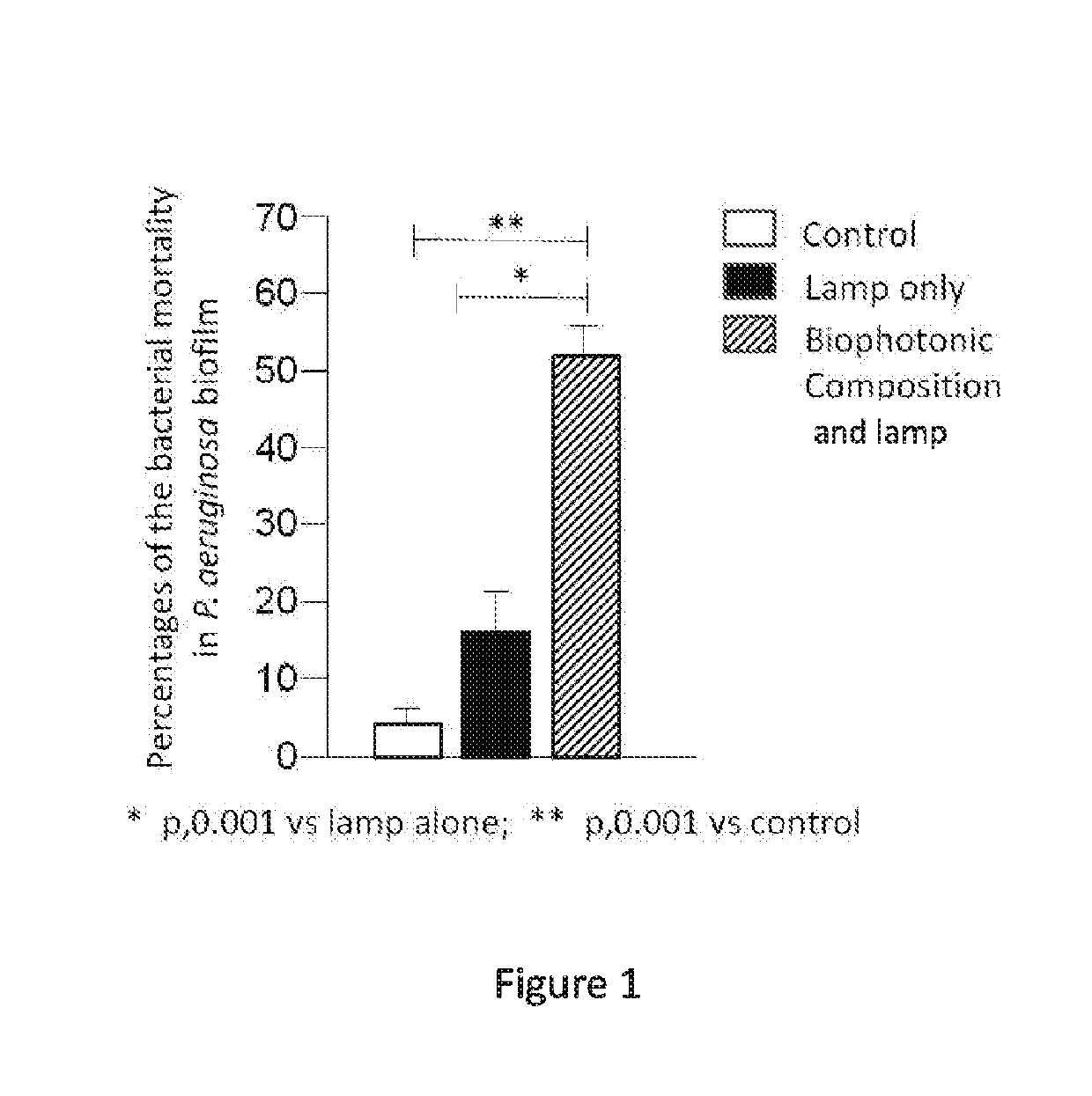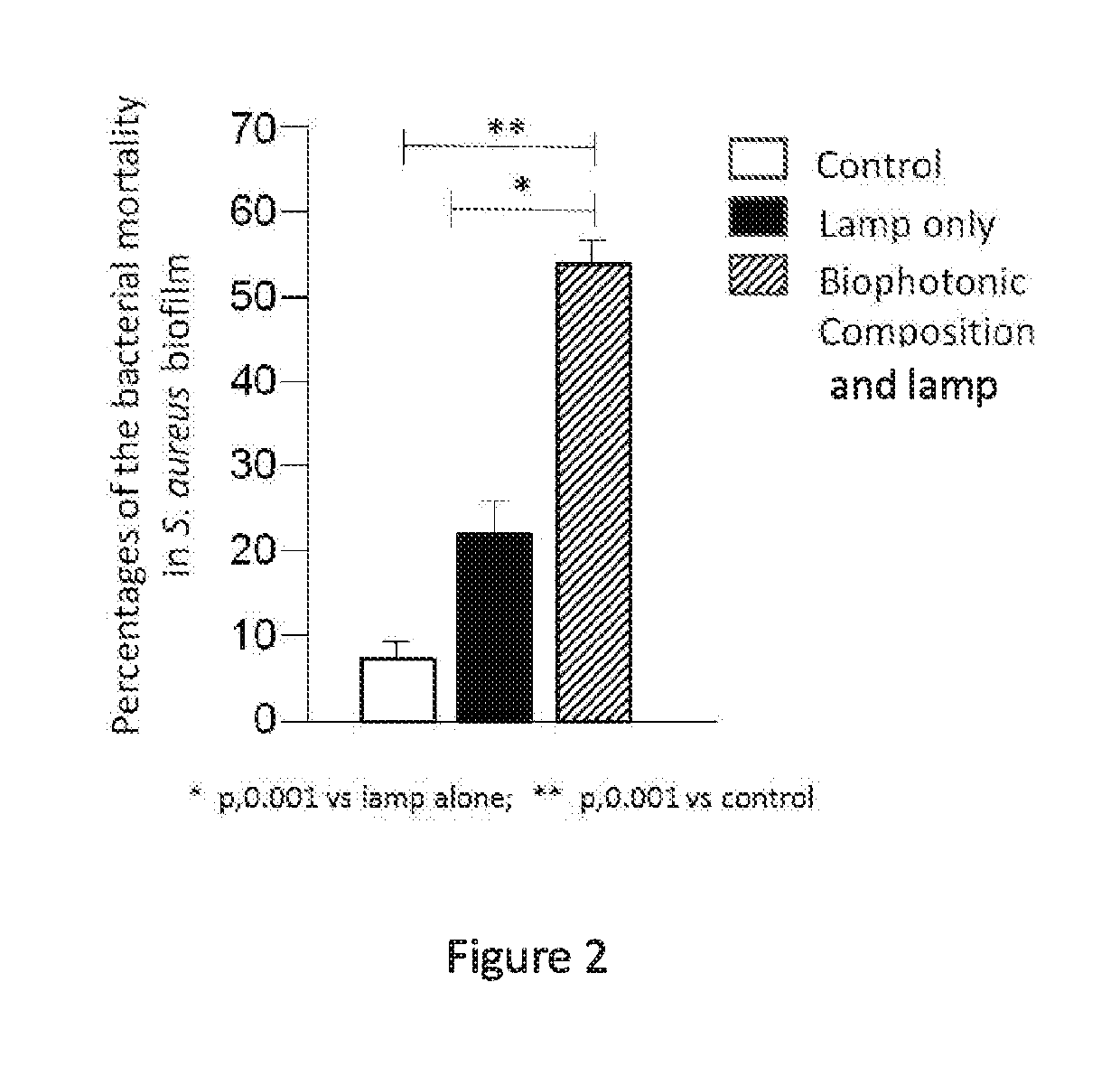Biophotonic compositions, methods, and kits for inhibiting and disrupting biofilms
a biofilm and composition technology, applied in the field of biophotonic compositions, methods and kits for inhibiting and disrupting biofilms, can solve the problems of stagnation of bacteria growth rate, decreased metabolic activity, and inability to prevent further growth of bacteria in wounds
- Summary
- Abstract
- Description
- Claims
- Application Information
AI Technical Summary
Benefits of technology
Problems solved by technology
Method used
Image
Examples
example 1
ormation Elimination / Reduction & Inhibition of Bacterial Biofilm Species Found in Wounds
[0209]A study was performed to evaluate an anti-biofilm activity of a biophotonic composition of the present disclosure on a biofilm generated by a Gram-negative, rod-shaped bacterium, e.g., Pseudomonas aeruginosa or Proteus mirabilis, and a biofilm produced by a Gram-positive coccal bacterium, e.g., Staphylococcus aureus. Each of these bacterial species is a major cause of wound infection and wound-associated biofilm formation.
[0210]Specifically, experiments were performed to assess an effect of illumination on the effectiveness of the biophotonic composition to reduce the presence of a wound biofilm and also the presence of the wound-associated bacterial species (see, DeLeon et al. (2014) “Synergistic Interactions of Pseudomonas aeruginosa and Staphylococcus aureus in an In Vitro Wound Model”, Infection and Immunity, 82(11): 4718-4728). In addition, experiments were performed to assess the effe...
example 2
eduction / Elimination—Chronic Wounds Treated with a Biophotonic Gel Composition
[0229]The study was designed to recruit a total of 100 patients at 12 clinical sites, but only 99 patients were included in total in the final analysis. As noted herein, reference is sometimes made to an “interim study” which includes an initial subset of 33 patients for which data were initially available. In certain instances, data from the interim study are disclosed herein.
[0230]An initial screen visit to identify eligible patients was conducted prior to beginning treatment. The recruited patients' would be participating for their treatment of chronic wounds (pressure ulcers (PUs), venous leg ulcers (VLUs) and diabetic foot ulcers (DFUs) in a real-life context clinical setting using a biophotonic composition of the present disclosure comprising a synthetic chromophore (Eosin Y) and an oxidant in a carbopol-based gel. For this study, the treatment period was designed to be two applications of the biopho...
PUM
| Property | Measurement | Unit |
|---|---|---|
| wavelength | aaaaa | aaaaa |
| wavelength | aaaaa | aaaaa |
| wavelengths | aaaaa | aaaaa |
Abstract
Description
Claims
Application Information
 Login to View More
Login to View More - R&D
- Intellectual Property
- Life Sciences
- Materials
- Tech Scout
- Unparalleled Data Quality
- Higher Quality Content
- 60% Fewer Hallucinations
Browse by: Latest US Patents, China's latest patents, Technical Efficacy Thesaurus, Application Domain, Technology Topic, Popular Technical Reports.
© 2025 PatSnap. All rights reserved.Legal|Privacy policy|Modern Slavery Act Transparency Statement|Sitemap|About US| Contact US: help@patsnap.com


